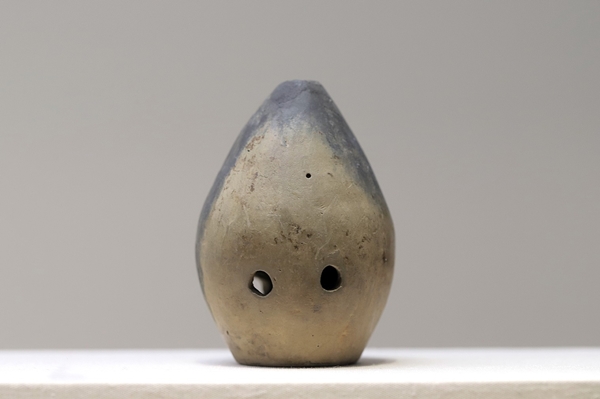The historical development of Xun
Xun is a closed-mouthed wind instrument unique to the Han nationality, which occupies an important position in the history of primitive art in the world. The origin of xun is related to the labor and production activities of the ancestors. It may have been originally made by the ancestors to imitate the calls of birds and beasts to trap prey. Later, with the progress of society, it evolved into a simple musical instrument, and gradually increased the sound hole, and developed into a melody instrument that can play tunes.

The xuns of primitive society have various shapes. For example, the pottery xun excavated from the Hemudu site in Yuyao County, Zhejiang Province, is oval in shape, with only blow holes and no sound holes, dating back about 7,000 years. The pottery whistle at the Yangshao Cultural Site in Banpo Village, Xi'an, Shaanxi Province, is shaped like an olive and has only one blow hole.
Compared with the primitive period and the Xia Dynasty, the Xun of the Shang Dynasty had a greater development. There were pottery, stone and bone ones. The pottery was the most common, and the shape was mostly flat-bottomed oval. During the Warring States Period, Taoxun was also flat-bottomed and oval, but there were also other shapes.
After the Qin and Han dynasties, Xun was mainly used in the court music of successive dynasties in the history of Chinese music. In court music, Xun is divided into Song Xun and Ya Xun. Songxun is smaller in shape, like an egg, and has a slightly higher sound; Yaxun is larger in shape and has a deep and low sound, and is often played in conjunction with a bamboo-made wind instrument. In the Book of Songs, the earliest collection of poetry in China, there is a sentence like "Boshi blows xun, Zhongshi blows chi", which means that two brothers, one blows the xun and the other blows the chi, expresses the brotherhood of harmony and goodwill.
In archaeological excavations and handed down xuns, some special-shaped pottery xuns or porcelain xuns are occasionally seen.
During the Qing Dynasty, the inheritance of Xun had been broken down. Wu Xunyuan, a native of Zhili, accidentally acquired Xun and copied the five-tone hole pear-shaped pottery Xun of the Yin Dynasty and passed it down to elucidate the secrets of ancient sounds. "Tanghu Xun Pu" is the earliest and only officially published xun-specific musical score discovered. It is of high value in terms of ancient xun-making methods, playing methods, and research on xun scores. It is a rare and precious historical material.
The Palace Museum and the Music Research Institute of the Chinese Academy of Arts have the red lacquer Yunlongxun used by the Qing court. It is 8.5 centimeters high and 7 centimeters in diameter. The xun body has six sound holes: four in the front and two in the back. The whole body is red lacquer, depicting golden dragons and cloud patterns. The nine-hole pottery xun, which is improved and developed by modern people, is based on the ancient six-hole xun, and then its shoulders and inner tube are expanded to increase the volume. hole.
In order to facilitate the fingering and playing, the complex fingering of the fork is minimized, and the sound holes are arranged in the order similar to the sound holes of the flute. Professional players can play twenty-six notes, including all semitones and one overtone within two octaves.
Professor Cao Zheng from the China Conservatory of Music has been making antique pottery xuns since the late 1930s. Later, on the basis of the ancient pear-shaped six-hole xun, Professor Chen Zhong of Tianjin Conservatory of Music designed a new type of nine-hole pottery xun, which was made of purple pottery from Yixing City, Jiangsu Province. This kind of nine-hole xun not only maintains the original appearance and timbre of the traditional xun, but also increases the volume, expands the range of sound, and can play scales and semitones, making it a musical instrument that can be transferred. Feature rich. In addition, because Jiukongxun has changed the original irregular arrangement of sound holes, according to the performance habits of modern people, it is more convenient to play, and it can be used for solo, ensemble or accompaniment. The appearance of the nine-hole pottery xun marks that the ancient Chinese xun has regained its vitality. Soon after, another student of Professor Chen Zhong, Zhao Liangshan of the Hubei Provincial Song and Dance Troupe, developed a ten-hole xun with mahogany, which solved the problem that the xun was difficult to play high notes.
 渝公网安备 50010702504639号
渝公网安备 50010702504639号